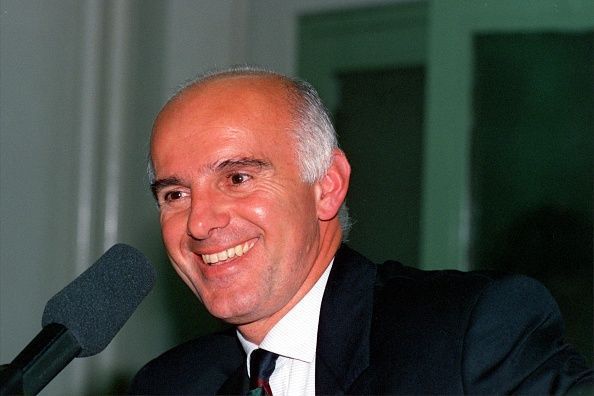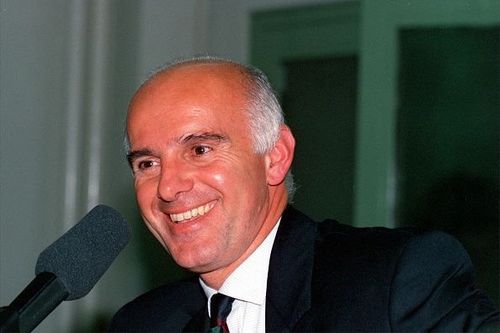
Is the 4-4-2 formation becoming extinct?

The history of 4-4-2
Just like life, football evolves and develops over the years. Futile systems are overcome by better versions which exploit their predecessors' weaknesses. Something similar in nature is happening to the 4-4-2 formation.
Arguably originating in the 1960s in Hungary, this formation was a mainstay in European football in the late 20th century. It was particularly in vogue in England as Liverpool, Nottingham Forest and Aston Villa all used it to prevail in Europe. However, the 4-4-2 stood out the most in Milan under Arrigo Sacchi.
Sacchi's version of 4-4-2 was unprecedented, an attacking version he used to great effect at AC Milan in the late 1980s. He was the pioneer of zonal marking which he integrated into his system. He demanded a maximum gap of 25 metres between the centre-back and the centre-forward which required a tremendously high defensive line.
Such intense pressing was perhaps possible due to the old offside rule, which makes it less feasible in the current scenario. However, the 4-4-2 was popular nonetheless until the turn of the century spurred a change of ideology.
Substituting the 4-4-2
Especially in Spain, the classical 4-4-2 was ditched in favour of a more flexible 4-2-3-1. One of the centre-forwards dropped deeper, enabling the two wingers to push further ahead. This change enabled more men in midfield and negated the problem where the second forward was rendered useless when not in possession.
Juanma Lillo who was at Real Sociedad at the time is credited as the proponent of the formation. It gained traction soon after. Javier Irureta won the league with it at Deportivo la Coruna. Then John Toshack implemented it at Real Madrid.

Subsequently, it surfaced in England as well. Now obviously the process did not have a definite turning point but Real Madrid's visit to Manchester United in 2000 can be qualified as one.
Both the teams lined up in a 4-2-3-1 with Dwight Yorke dropping as a 'number 10' and Andy Cole as the main striker. Raul and Fernando Morientes were in the corresponding positions for Real Madrid.
Another blow to the 4-4-2 was the 2010 World Cup. One match, in particular, demonstrated the weakness of the formation adeptly. England used Wayne Rooney and Jermaine Defoe in a front duo whereas Germany lined up with a more fluid quartet of Lukas Podolski, Thomas Muller, Mesut Ozil and Miroslav Klose.
Germany emphatically won the game and the tournament, in particular, was brutal to the 4-4-2. Champions Spain played with no striker at times, let alone two and their midfield dominance paid off spectacularly.
In hindsight, the question arises that how did the 4-4-2 manager to remain relevant for such a long time? Well, aside from Sacchi's version it has always been regarded as a defensive formation. The two men in midfield are easily dominated and more often than not possession is conceded.
As the team retreats, the gap between the strikers and the midfield four lengthens and as a result, their impact ceases. So one of them was pulled inside to keep the balance. Furthermore, both the central midfielders in the 4-4-2 needed to be all-action players, heavily contributing on both sides of the pitch. Like the Steven Gerrards and the Yaya Toures.
However, those players are rare and currently two types of midfielders form the duo/trio; one is a defensive linchpin and the other is a creative player who provides the balance. The 4-3-3 is yet another variation, but one which is closer to the 4-2-3-1 in the sense that the midfield dominance is maintained.
Pass to the flanks, cross, repeat. This approach, once commonplace, has definitely waned in favour of more buildup play. As a result, the need of two strikers diminished further, taking the gloss off the 4-4-2.
Now a pressing 4-4-2 with a high line has been implemented, but that needs specific players for the roles and the new offside rule does not help the cause. So, more often than not the two banks of four stick closely and as a result retreat towards their goal. The gap between the lines cannot be increased, as it can be exploited ruthlessly by opposing attackers.
The three-man defence has also accelerated the decline of the 4-4-2. Marking the two strikers is relatively comfortable for the three centre-backs and they gain an extra man in midfield, particularly in the 3-5-2.
Conclusion

The 4-4-2 is not totally defunct as of now. Numerous variations come to mind. Lionel Messi's genius has enabled Barcelona to reap rewards while Zinedine Zidane's diamond midfield at Real Madrid has not been bad either. Leicester City mastered the counter-attacking 4-4-2 in their shock league win, not unlike Bayern Munich in 2013 when they destroyed Barcelona.
However, these examples are far and few in between and they are variations to suit the personnel. The rigid 4-4-2 has receded into the background in recent times. Formations which are more fluid and flexible have developed which have capitalized on the flaws in the 4-4-2.
It is still seen, especially in the lower leagues, however, its surrender is clear. There used to be something aesthetically pleasing about how the coordinated banks of four operated. How one striker could subconsciously know where his partner was. How the relentless crossing was devoured by the big men. Alas.
Come on you managers! Make the 4-4-2 great again.
What's your take on 4-4-2? Do you think it should be boycotted completely? Or do you think it still has some scope in modern football? Tell us in your comments below!